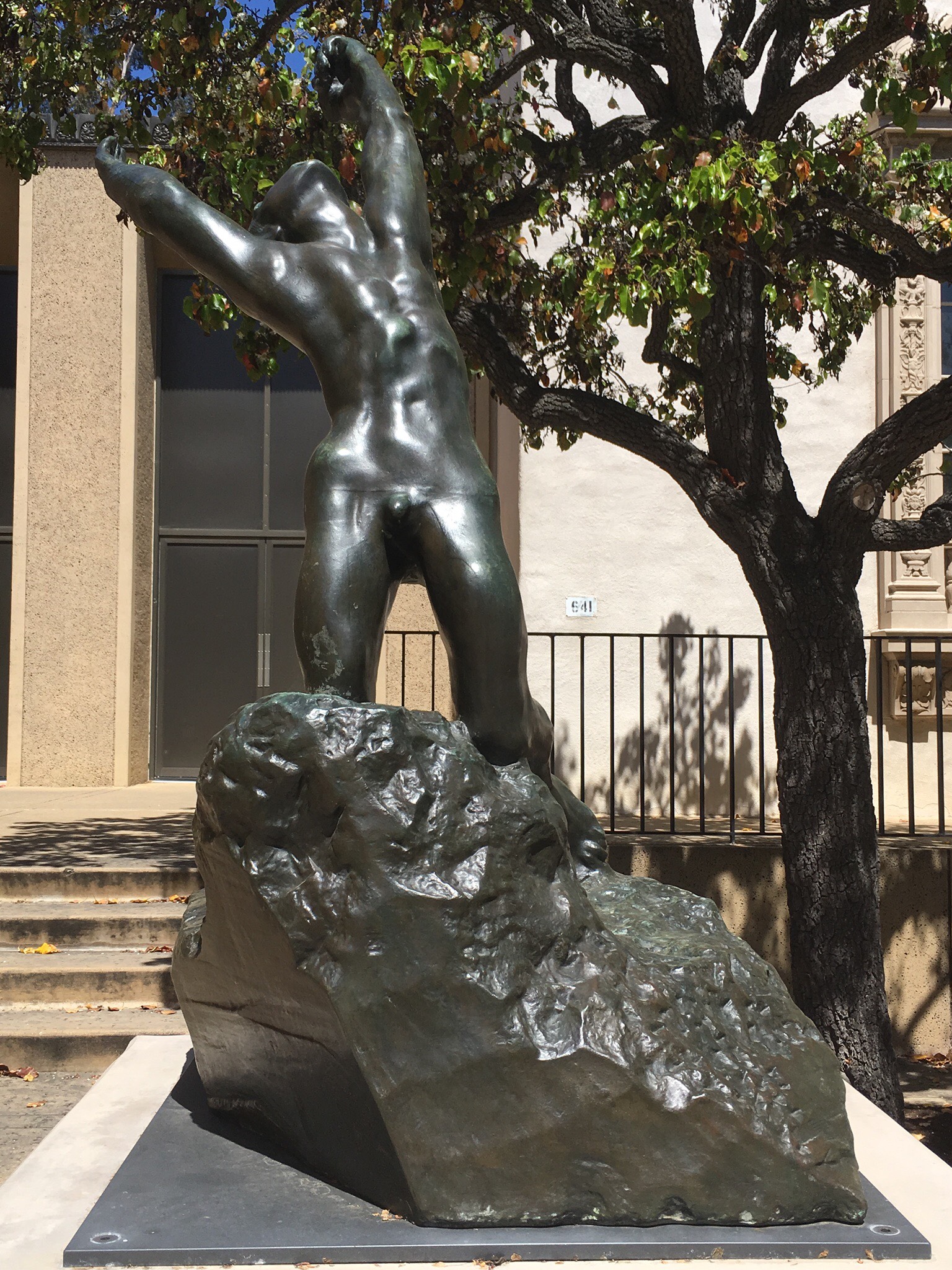SDMA || Art of the Open Air || The Prodigal Son
Recently I was walking through Balboa Park on a beautiful San Diego morning. My purpose in being there was to view the exhibits in the San Diego Museum of Art. It had been some months since I had been, and my soul was hungry for beauty.
As I approached the museum, with its glorious Spanish architecture that never fails to take by breath away no matter how many time I’ve seen it, my eyes were drawn to a sculpture installed to the left of the museum doors.
The sculpture was of a man, kneeling and naked with his hands outstretched to the sky. The tension in his body spoke of long struggle, release, abandon, and I was drawn closer by the artistry inherent in the detail of every sculpted muscle.
A well-placed plaque informed me that this sculpture was part of an exhibit called “Art of the Open Air”, sculptures installed outside in the plaza to be viewed and enjoyed by passers-by in all the changing lights and seasons.
On closer inspection, I saw that the piece had been created by the artist Auguste Rodin in the year 1905, and was named “The Prodigal Son.”
Many people are familiar with the Christian parable of the Prodigal Son found in the New Testament. The story is of a man who has two sons. The younger of the two asks for his inheritance early. His father consents and divides all he has between his sons. The younger son takes his money and sets off. In a foreign land he squanders his inheritance on wild living and ends up with nothing. A famine strikes the land, so the son hires himself out to a man who sends him to the fields to feed his pigs. The son is so hungry he is tempted to eat the slop given to the pigs.
He begins to think to himself that his father has many servants that are fed very well, and here he was starving to death. He decides to go back to his father, beg forgiveness, say he is no longer worthy to be called a son, and ask to be a servant.
When his father sees him returning home, he does not wait for his son to approach, but instead runs to him, embracing him, and tells his servants to kill the fattened calf to celebrate the return of his lost son.
Once I’d read the name of the sculpture in Balboa Park, it seemed clear that the artist intended his work to be a depiction of the younger son in despair. On his knees, in the mud, clods of earth clutched in both hands, supplicating the heavens in his hopelessness.
But this is not what I saw when I looked at the sculpture. Before I knew what its name was, only one word came to my mind: “Victory.”
I did not see despair, squandered wealth, regret, or humiliation. I saw a man who had reached the finish line after a great struggle. I saw a body, strong, but exhausted from constant turmoil. I saw him clutching dirt in his hands, anchoring himself to Earth in triumph at having made it through his ordeal. I saw his face tossed towards heaven in divine relief at having survived. I saw victory.
"The Prodigal Son," by Auguste Rodin, 1905.
And when I saw that he had been named "The Prodigal Son," I had another thought.
The parable of the bible is meant to describe the unconditional love God has for his children. But the term “prodigal son” has also been used as a label for people who go their own way; a way that breaks the barrier between what is expected of them and who they actually are.
Learning the name of the work of art that intrigued me so much did not change my initial impression of the piece. I still saw it as triumphant. I saw it as a victory for those who have had the courage to march against the status quo, to stand up for their rights, to swim upstream against the current of religious disapproval, societal disapproval, familial disapproval. A victory for those who have been flayed with criticism, gossip, hatred, blackmail, and cruelty for standing on their truth.
Because the inheritance we are given isn’t always gold. Sometimes it is dysfunction, violence and toxicity. Wise indeed is the son who casts off that heritage to fall to his knees on the rock of his triumph, hands outstretched to the sky, able to proclaim, “I am the Prodigal Son, and I have overcome my legacy.”











